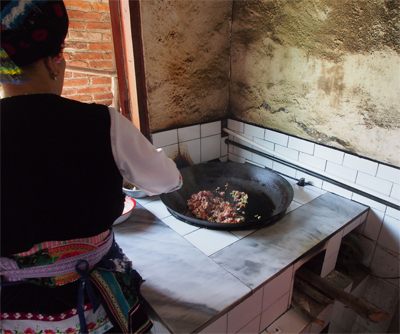
Stir-frying lunch
|
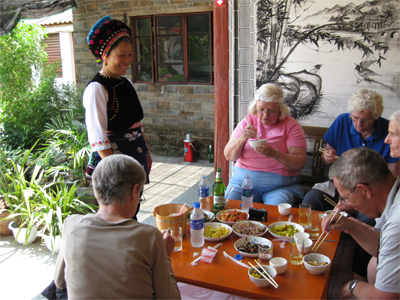
Our hostess and us enjoying the meal |
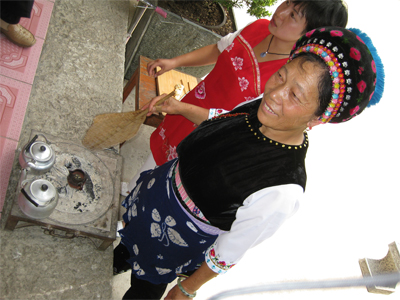
Tea ceremony
|
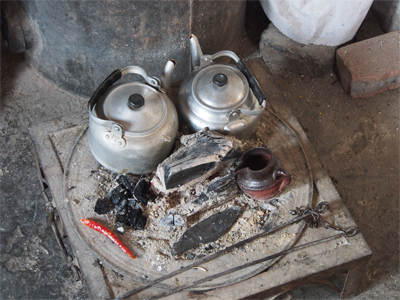
Preparation for the tea ceremony |
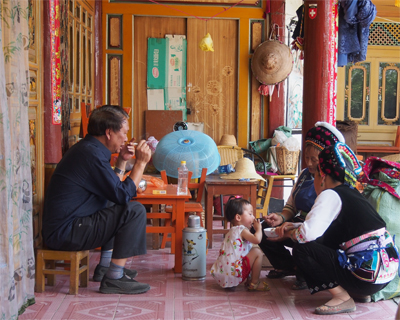
The family had lunch as well
|
Back in Dali, Lisa took us into the old town to see the Roman Catholic Church. It is very unique. It was built in the Chinese style and only looked like a Catholic church because of the cross on the steeple and the statues of Mary and the crucifix inside. It was very brightly colored and made of wood in the late 1800's.
|
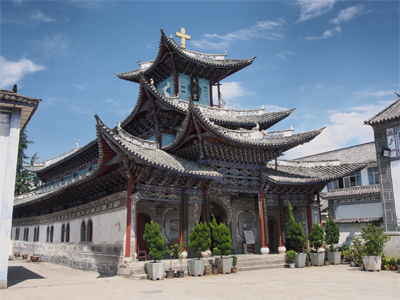
Roman Catholic Church in Dali
|
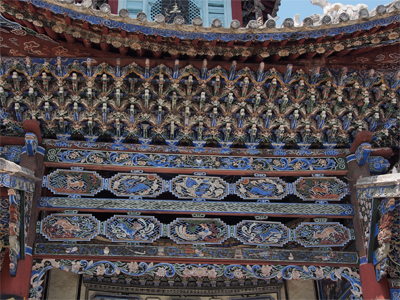
Roman Catholic Church in Dali |
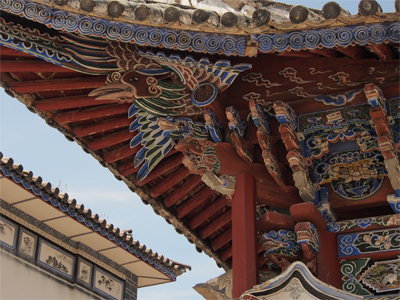
Roman Catholic Church in Dali |
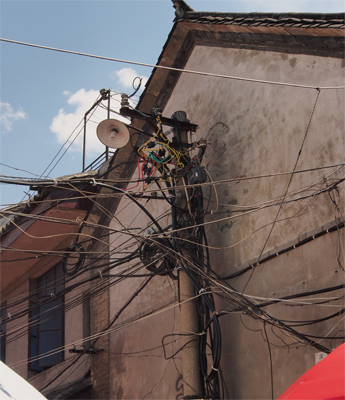
More creative electrical work
|
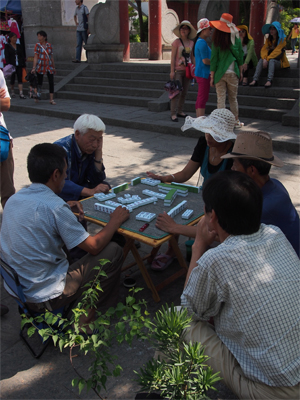
Playing Ma Jong
|
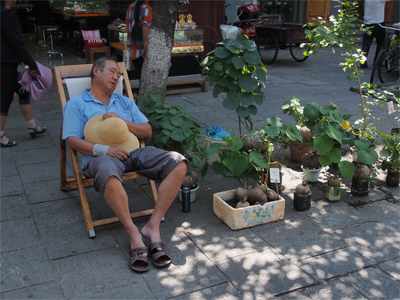
Sleeping vendor |
Tues., 6/18/13 - Dali
This morning we drove 1 1/2 hours southwest to visit the Muslim village of Weishan (the Eastern Lotus Village). This is another one of the 55 minorities in China.
We walked to the Eastern Lotus mosque, which was built in 1941 but resembles a pagoda with a ball and crescent moon on the top. We couldn't go inside because of the crowds of men arriving from all over for a funeral. We didn't wait to see the shrouded body and the Muslim men didn't want us there anyway.
We stepped inside a farmer's house. It had the usual design of four corner courtyards with a large central open area. Animals (cows, ducks, rooster and hens) were kept in one part and two families lived on the sides.
We walked along some more of the 200 year-old salt-horse road and entered a caravansary that is now a museum of sorts. Upstairs was a tearoom with a view of the roofs of the village houses.
|
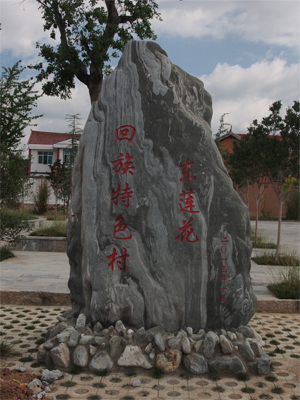
Welcome to Weishan stone
|
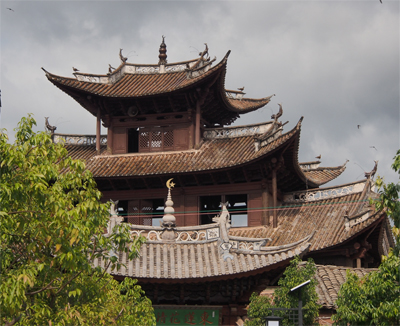
Muslim mosque |
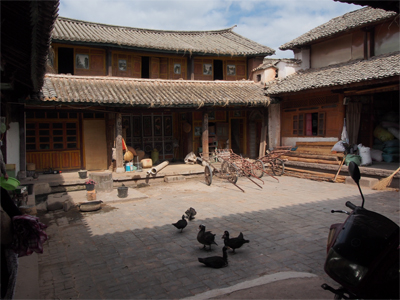
Ma Ru-quing house
|
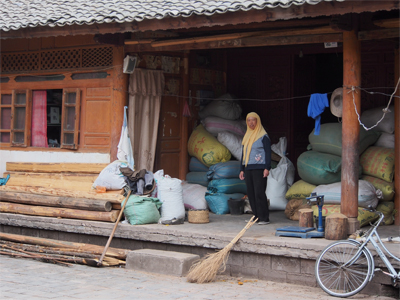
Ma Ru-quing house |
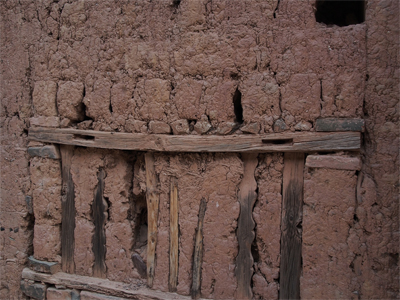
Wall construction - straw and rice milk |
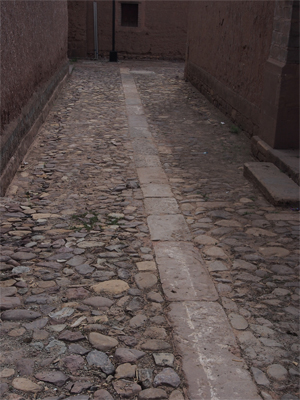
Tea horse road with solid stones in the center for the horses' hoofs
|
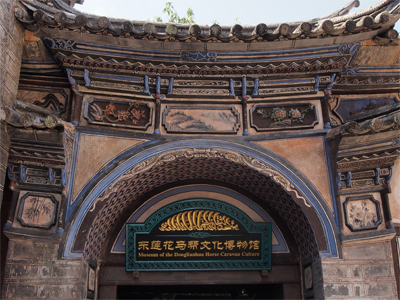
Museum of the Donglianhua Horse Caravan Culture |
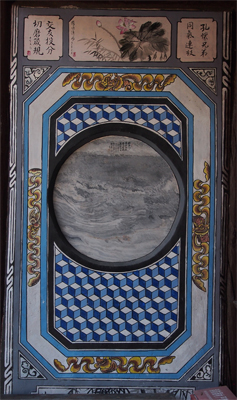
Decoration inside the Museum of the Donglianhua Horse Caravan Culture
|
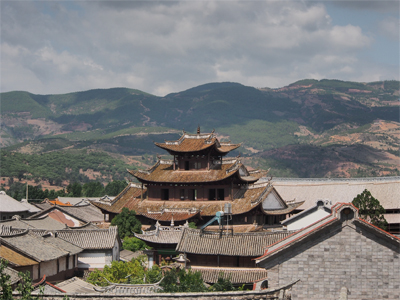
View from upper level of Museum of the Donglianhua Horse Caravan Culture
|
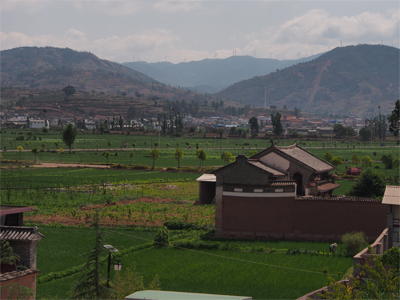
View from upper level of Museum of the Donglianhua Horse Caravan Culture |
We ate lunch in Weisham village - lots of tofu and pork with vegetable dishes. After lunch we strolled the main street, looking at the shops and sights.
|
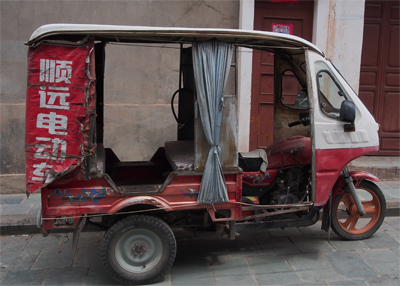
Three-wheeled taxi
|

Open-air dentist's office
|
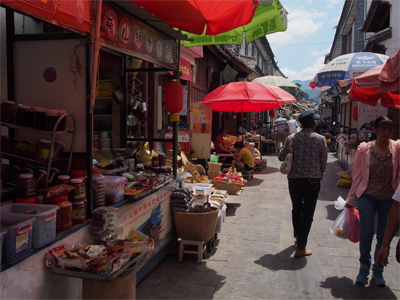
Street scene |

Colorful stools made by the local people
|
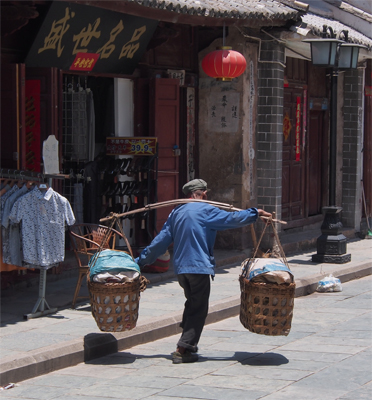
Street scene - carrying goods |
Next we drove up to Weibao Mountain to visit some Taoist temples. We walked up a stone path with many steps to the Yi Temple and torch ceremony plaza. The statue of the first king of Tao (617 - 674 AD) is in the main altar. Statues of the other 13 Tao kings are on either side of the temple.
We walked on along the stone path listening to the calming music coming from speakers along the route. It was pleasant in the shade of the trees at this high altitude. Along the sides of the path are the many tombs where the monks are buried. The living monks live at the top of this mountain.
The Wenchang Palace was originally where the dragon was worshiped. Painted on the walls on either side of the YinYang doors were a tiger and a dragon. Inside was a Ming Dynasty bridge over a fish and turtle pond. The main altar areas had statues of the Writing Brush god with a third eye for intelligence, the Literature god, and the god to protect against cheating. High school students come here to seek help in taking their exit exams.
|
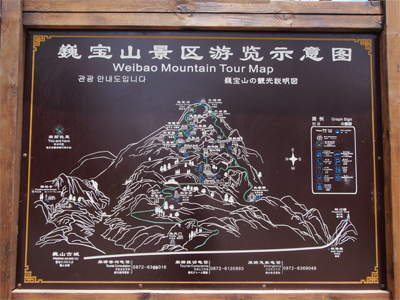
|
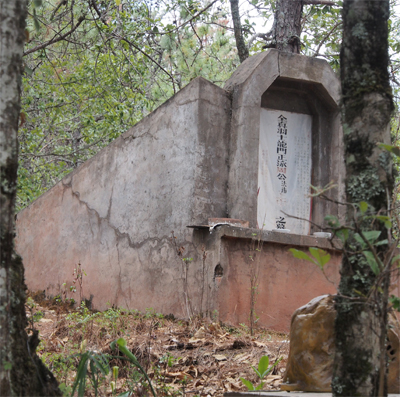
Taoist monk's grave
|
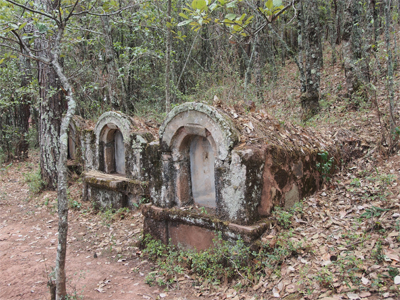
Taoist monks' graves |
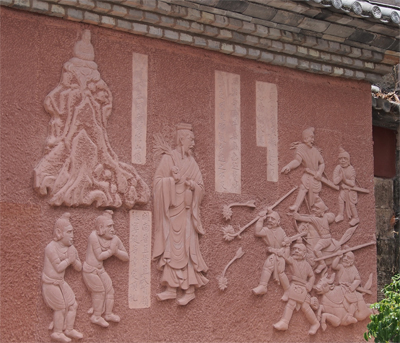
At Wenchang Palace |
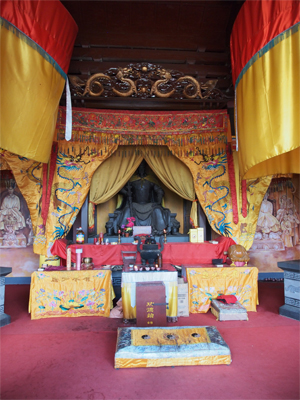
Wenchang Palace altar
|
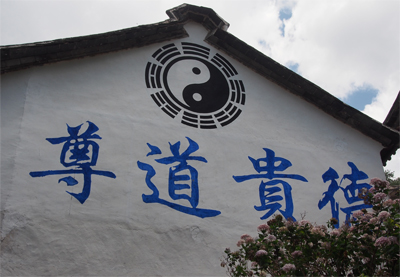
Signs on the wall
|

Interesting sign |
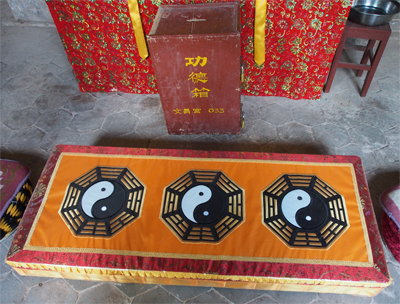
Kneeling pad in Taoist Temple
|
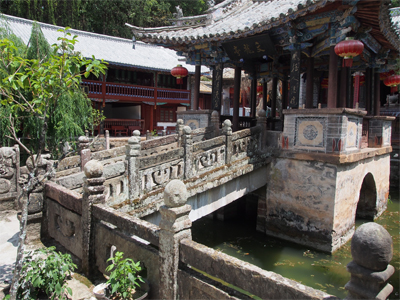
Ming-era bridge |
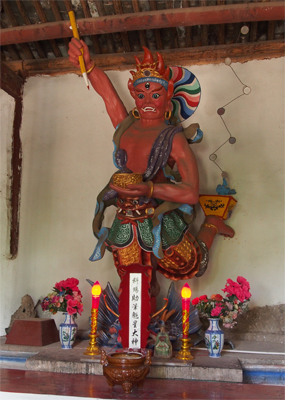
Writing Brush god
|
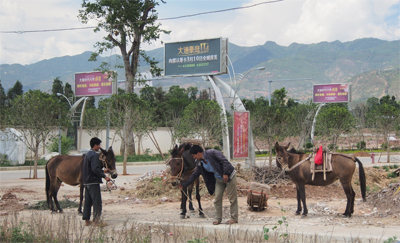
Street scene from the bus on the way back to Dali |
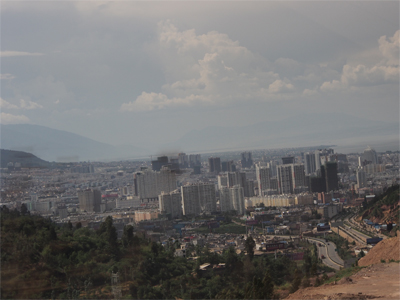
Modern city of Dali
|
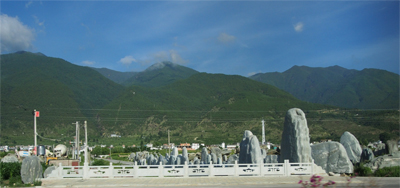
Landscape stones waiting to be bought and installed |






































